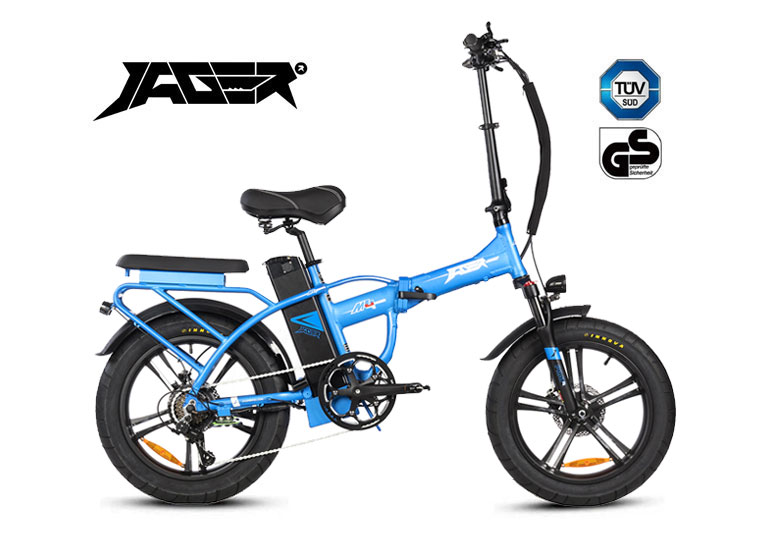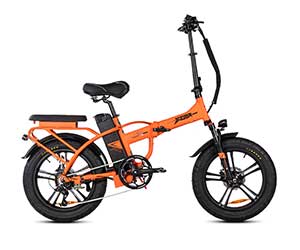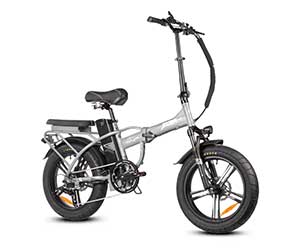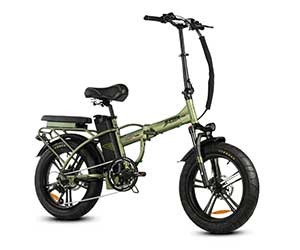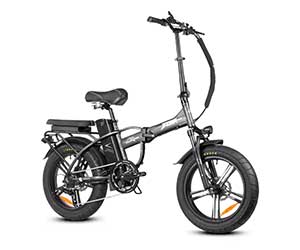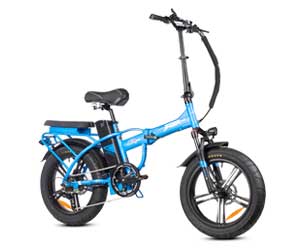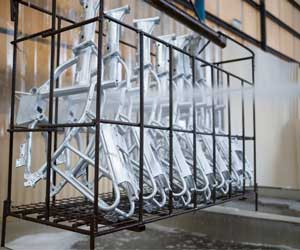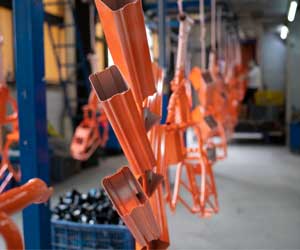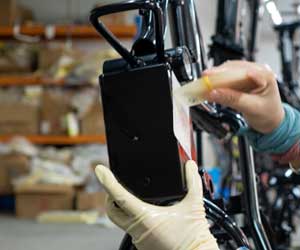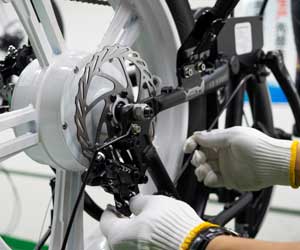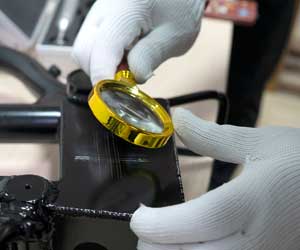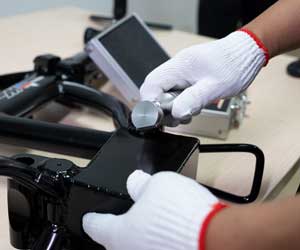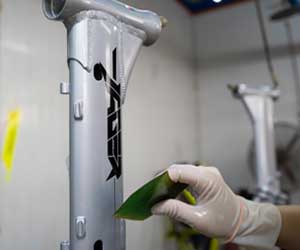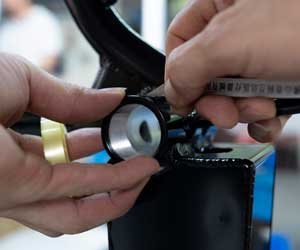Jager bikes
Jager SPORT M4 Folding electric bike specifications
Shock Fork: FATMAN-ML 20″ , MOZO front suspension fork
Saddle: Comfort big saddle
Fender: ABS Fender black
Seat post: KS approved by TUV
Tire: Innova tire 20*4 1/4 Carrier: Alloy
Alloy wheel motor: alloy wheel rim 48V/500W
Rear light: Jager Bike RL810 + 48VDC
Stem: Adjust alloy stem
Front light: Jager Bike D-022 48V
Grip: Leather grip
Front & rear brake: XOD Hydraulic brake
Pedal: Foldable TUV approve
Charger: 54.6V/2A(ATN)
Battery: 48V 18AH G9 with patent lock Controller: 48V/23A
Crank: Jiankun double wall 52T
Shifter/Derailleur/Freewheel: SHIMANO 6 GEAR
LCD Display: LCD X6 display
Pedal: Foldable TUV approve
Carton: 5 layer
How to Choose an Electric Bike?
Electric bikes classify according to their degree of motor assistance for regulatory reasons. Knowing which class of electric bike, you need is essential:
Class 1: Motors kick in only when pedaling, stopping after 20 mph.
Class 2: Has a pedal-assist mode up to 20 mph and a throttle-powered mode.
Class 3: Pedal-assist only (like class 1), but assistance continues until 28 mph.
E-bikes of class 1 cost the least and, from a regulatory standpoint, are the most widely accepted. They can ride on city streets and many bike paths. E-bikes of this type now permit on traditional mountain bike trails, but access is not universal, so check first.
In most places, class 2 e-bikes are the same as class 1 e-bikes. Both types have a top speed of 20 mph for motor assistance.
It is common for commuters and errand runners to use class 3 e-bikes since they are faster and more powerful (and cost more). With more performance, you can keep up with traffic better, climb better, and carry heavier loads. Most bike paths and mountain bike trails, however, are not bikeable.
E-Bike Batteries, Riding Ranges, and Motors
Power plants are a significant focus of bike manufacturers. In terms of performance and riding range, a more powerful motor delivers more speed, while a more powerful engine produces more torque, so you can climb hills and haul cargo more efficiently. A more powerful motor burns through the battery more quickly, reducing the range of your ride.
For instance, you’ll see broad riding-range specs when comparing prospective e-bikes: 20-100 pedal-assisted miles. That’s because the riding range is affected by so many factors.
It helps to have a big battery
Watt hours measure how long a battery will last before dying. Therefore, motor power is equally important: a 500-watt motor with a 500-watt battery (standard class 3 bike setup) drains energy faster than a 250-watt motor with a 500-watt battery.
From empty, it takes three to five hours for the battery to charge fully, with larger batteries taking longer. If you plan on commuting on an e-bike, you can buy additional chargers (or carry your charger).
Two batteries can use at the same time on some e-bikes. It can give you longer rides-and if one battery goes wrong, you have a backup battery. If your battery only lasts for a short time (typically several thousand charges), a spare battery can be purchased or you can replace it when it wears out.
The battery mounting setup provides space for bottle cages or a small bag. External batteries, however, are easier to charge and replace.
E-Bike Motor Location
The hub-drive motors are inside the rear wheel hub, while the mid-drive engines locate on the bottom bracket (between the crank arms and the frame).
There are several reasons why mid-drive motors are popular. The pedal assist responds naturally and having the engine centered and low ensures a smooth, stable ride.
Hub-drive motors: Hub-drive motors transmit pedal power directly to the rear wheel, giving you the feeling of being pushed along. Changing a flat on a hub-drive bike can be more complex than on a standard (or mid-drive) bike. Unlike front-wheel drive cars, front-hub motors allow a standard bike drivetrain to use at the rear.
E-bike Motor Torque
An e-bike’s torque measures in newton meters (Nm), and the listed maximum may range from 40 Nm to 80 Nm. Pedal assist settings will affect your actual riding torque, however.
Built-in security: Some bikes have rear-wheel locks attached to the frame, while others have battery locks that can key to match bike locks (purchased separately).
Component quality: Different price tiers represent similar levels of component quality. Less expensive e-bikes often don’t feature high-end features like smartphone integration, and they’ll also have value-priced components. High-quality brakes, tires, shifters, and drivetrains are more durable and responsive than those on a regular bike.
Frames: Aluminum is the most common material for e-bike frames, but a wide range of other materials (from carbon fiber to steel) is becoming available. Frame material and design, as well as motor and battery size, contribute heavily to the overall weight. E-bikes are generally heavier than regular bikes but overcome sluggishness with motor assistance. But a lighter bike will still feel more nimble. A more lightweight model will likely provide a better ride if you choose between two otherwise comparable bikes.

